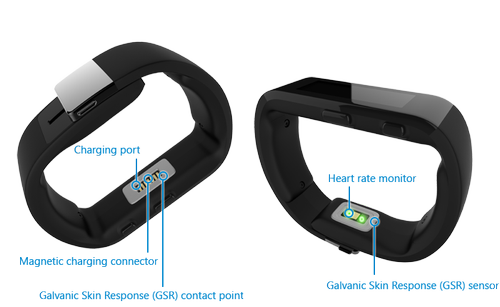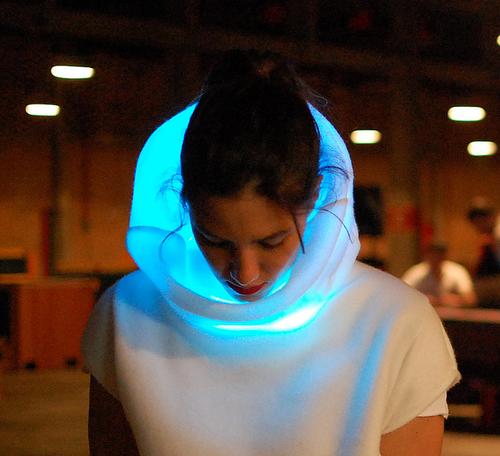June 29, 2015

Wearables are changing the way we see ourselves. With onboard sensors that have access to our bodies, we are starting to know our physical selves like never before, quantifying our activity, our heart rate, breathing, and even our muscle effort. But we are much more than just a physical machine, driven also by emotion, which is something wearable companies are beginning to measure and give insight into with the use of sensors such as the GSR.
The GSR sensor measures the electrical characteristics or conductance of your skin, looking specifically at your sweat to determine your arousal state. The higher the conductancy, the higher your arousal. This information can then be used to determine things like your stress level or emotional state. The GSR is actually one component of the modern day polygraph or lie detector test and is usually combined with heart rate, respiratory, and blood pressure to produce results.

GSR is beginning to make its way to the masses in some of the latest wearables to hit the market, including Jawbone's UP3 and Microsoft's Microsoft Band. The Microsoft Band measures the conductivity of its wearer's skin to determine stress level. The measurement occurs between the GSR sensor under the clasp and the secondary GSR contact point under the face of the band and the data is sent through to the Microsoft Health app.
The GSR sensor is also giving new life to the mood ring. A Finnish startup called Moodmetric has developed a ring of the same name equipped with the sensor to measure a user's emotional reactions throughout the day. The ring sends real-time information to the Moodmetric smartphone app via Bluetooth, giving users instant feedback on their mood and emotional levels as well as exercise tips to help them calm down if they find themselves overly charged.

But the use of GSR to measure your emotional state doesn't always need to be a private exercise. California wearable startup Sensoree has developed the GER mood sweater, which uses this sensor to allow user's to show how they are feeling by changing the color of the garment -- it gives new meaning to "wearing your heart on your sleeve." The GER (Galvanic Extimacy Responder) sweater uses the information gathered from the GSR sensors worn on the hands to change the color of the LED lights in the sweater's cowl to match the mood of the wearer. The goal of the smart clothing, according to the startup, is to "externalize intimacy" by showing emotion as a color on the garment: green as tranquil, purple as ruffled or aroused, red as nervous, yellow as ecstatic and blissful, and so on.

Just as steps have given us the data to help us make better decisions about our physical activity, the GSR sensor will begin to present data for us to use in order to make better choices to reduce the stress in our lives. Understanding which environmental conditions or actions are making you anxious or unhappy can be a powerful first step in helping to make a change for the better. It is early days for the use of the GSR sensor for the masses but it is definitely one sensor to watch as wearable adoption grows.
Tom Emrich writes about emerging technology including wearable tech, 3D printing, and the Internet of Things for many technology, lifestyle, and news publications. He is currently the Editor-in-Chief for Designers of Things, Senior Editor at BetaKit, and the wearables writer for MobileSyrup. Tom's writing covers launch announcements, funding news, hands-on device reviews, industry analysis, and editorial.
About the Author(s)
You May Also Like



